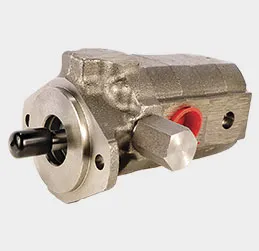carbon steel stamping parts
The Significance of Carbon Steel Stamping Parts in Modern Manufacturing
In the landscape of modern manufacturing, carbon steel stamping parts have emerged as essential components across a wide array of industries. These parts, fabricated through a process called stamping, offer numerous advantages that make them highly desirable for various applications. This article explores the features, benefits, production process, and applications of carbon steel stamping parts.
Understanding Carbon Steel
Carbon steel is an alloy primarily composed of iron and carbon, with other elements potentially added to enhance its properties. The carbon content can vary, influencing qualities such as strength, ductility, hardness, and weldability. Typically, carbon steel is categorized into three types low, medium, and high carbon steel, each serving different purposes based on grain structure and mechanical properties.
The Stamping Process
The stamping process involves shaping and forming material into specific profiles by applying controlled pressure using stamping dies. This method is particularly efficient for producing large quantities of identical parts with high precision. The steps in the stamping process generally include
1. Designing the Die Initially, a die is designed based on the part specifications. 2. Material Preparation Sheets of carbon steel are cut to size and prepared for stamping. 3. Stamping The prepared sheets are fed into a stamping machine where they are pressed by the die to create the desired shape. 4. Finishing After stamping, parts may undergo additional processes like trimming, bending, or surface treatment to meet specific requirements.
The ability to produce intricate designs with tight tolerances makes stamping an ideal choice for manufacturers looking to optimize production.
Benefits of Carbon Steel Stamping Parts
1. Cost-Effectiveness Carbon steel is relatively inexpensive compared to other metals, making it an economical choice for manufacturing. Stamping allows for mass production with minimal waste, further driving down costs.
carbon steel stamping parts

2. Strength and Durability Carbon steel components are known for their mechanical strength and endurance. They can withstand high stress and harsh environments, which is crucial in industries such as automotive, aerospace, and industrial machinery.
3. Precision and Consistency The stamping process offers high accuracy and uniformity, ensuring that each part meets the specified dimensions and tolerances. This reliability is key in applications where failure can lead to significant safety hazards.
4. Versatility Carbon steel stamping parts can be used in various applications, from brackets and enclosures to complex components in machinery. The adaptability of carbon steel allows for customization to meet specific demands.
5. Recyclability As sustainability becomes increasingly important, the recyclability of carbon steel presents a significant advantage. Parts made from carbon steel can be easily recycled, contributing to a circular economy and reducing environmental impact.
Applications of Carbon Steel Stamping Parts
Carbon steel stamping parts are utilized in myriad applications across different industries
- Automotive Industry Used for structural components, brackets, and chassis parts, carbon steel stamping is integral to vehicle design and safety. - Electronics Many electronic devices incorporate stamped parts, including housings and brackets, ensuring structural integrity and performance. - Appliances Stamped components are prevalent in household appliances, providing the necessary support and functionality. - Construction In construction, these parts are employed in structural frameworks, fixtures, and fittings, demonstrating their strength and reliability.
Conclusion
In conclusion, carbon steel stamping parts play a pivotal role in modern manufacturing, delivering a combination of affordability, strength, and versatility. As industries continue to evolve, the demand for efficient, high-quality components will grow, solidifying the importance of carbon steel stamping in various applications. Manufacturers who harness the capabilities of this material and process are better positioned to meet the challenges of the modern market while fostering innovation and sustainability in their operations.
-
Pros & Cons of Sand Casting: Products & ApplicationsNewsAug.19,2025
-
Advanced Crawler Drilling Rig for Confined Spaces-Baoding Hairun Machinery And Equipment Trading Co., Ltd.NewsAug.18,2025
-
Crawler Drilling Rig- Baoding Hairun Machinery And Equipment Trading Co., Ltd.|Pneumatic Power,Frame-Supported DesignNewsAug.18,2025
-
Precision OEM Valve Body Castings for Superior PerformanceNewsAug.18,2025
-
Crawler Mounted Drill Rig - Baoding Hairun Machinery | Underground Drilling SolutionsNewsAug.18,2025
-
Crawler Mounted Drill Rig - Baoding Hairun | Pneumatic Safety, Mining EfficiencyNewsAug.17,2025















